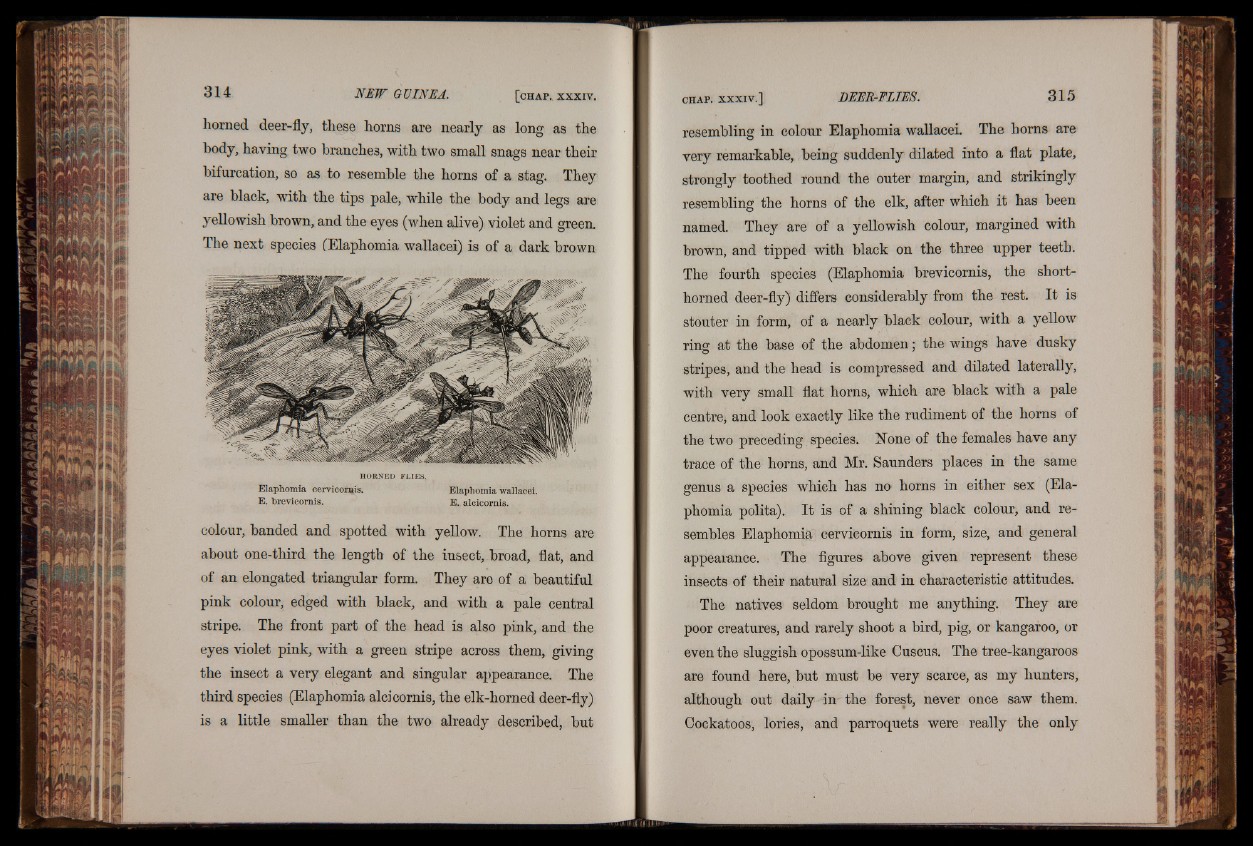
homed deer-fly, these horns are nearly as long as the
body, having two branches, with two small snags near their
bifurcation, so as to resemble the horns of a stag. They
are black, with the tips pale, while the body and legs are
yellowish brown, and the eyes (when alive) violet and green.
The next species (Elaphomia wallacei) is of a dark brown
HORNED FLIES,
Elaphomia cerviconatis. Elaphomia wallacei.
E. brevicomis. E. alcicornis.
colour, banded and spotted with yellow. The horns are
about one-third the length of the insect, broad, flat, and
of an elongated triangular form. They are of a beautiful
pink colour, edged with black, and with a pale central
stripe. The front part of the head is also pink, and the
eyes violet pink, with a green stripe across them, giving
the insect a very elegant and singular appearance. The
third species (Elaphomia alcicornis, the elk-horned deer-fly)
is a little smaller than the two already described, but
resembling in colour Elaphomia wallacei. The horns are
very remarkable, being suddenly dilated into a flat plate,
strongly toothed round the outer margin, and strikingly
resembling the horns of the elk, after which it has been
named. They are of a yellowish colour, margined with
brown, and tipped with black on the three upper teeth.
The fourth species (Elaphomia brevicomis, the shorthorned
deer-fly) differs considerably from the rest. It is
stouter in form, of a nearly black colour, with a yellow
ring at the base of the abdomen; the wings have dusky
stripes, and the head is compressed and dilated laterally,
with very small flat horns, which are black with a pale
centre* and look exactly like the rudiment of the horns of
the two preceding. species. None of the females have any
trace of the horns, and Mr. Saunders places in the same
genus a species which has no horns in either sex (Elaphomia
polita). It is of a shining black colour, and resembles
Elaphomia cervicornis in form, size, and general
appearance. The figures above given represent these
insects of their natural size and in characteristic attitudes.
The natives seldom brought me anything. They are
poor creatures, and rarely shoot a bird, pig, or kangaroo, or
even the sluggish opossum-like Cuscus. The tree-kangaroos
are found here, but must be very scarce, as my hunters,
although out daily in the forest, never once saw them.
Cockatoos, lories, and parroquets were really the only